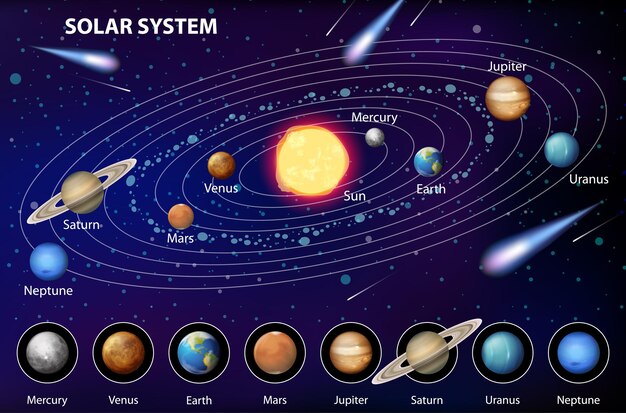The Solar System is the gravitationally bound system of the Sun and the objects that orbit it, either directly or indirectly. Of the objects that orbit the Sun directly, the largest are the eight planets, with the remainder being significantly smaller objects, such as dwarf planets and small Solar System bodies. Of the objects that orbit indirectly—the moons—two are larger than the smallest planet, Mercury.
The total mass of the Solar System is approximately 4×10^30 kg, which is about 333,000 times that of Earth. The Sun exerts a gravitational force on each of the planets and satellites in proportion to its mass; thus it has been said that “all worlds hang upon his shoulders”. The inner solar system contains four terrestrial planets: Mercury, Venus, Earth and Mars. The outer solar system contains four giant planets: Jupiter, Saturn, Uranus and Neptune; these together have at least 64 moons. There are also numerous minor planets (also known as asteroids) in more-or-less elliptical orbits aroundthe sun; comets travel in highly eccentric elliptical orbits or hyperbolic trajectories around both the Sunand various points in space called Lagrangian points. All these worlds were formed out of a rotating accretion diskof dust and gas circling our young sun over 4 billion years ago.
Most planetary scientists agree that there are probably many more small undiscovered worlds out there orbiting distant stars similar to our own solar system’s formation history. In recent years astronomers have discovered thousands of so-called “exoplanets” using ground based telescopes as well as space missions like NASA’s Kepler mission. Many exoplanets appear to be very different from anything we have here in our own solar neighborhood but others may be quite similar to someplace closer to home like Mars or even Earth itself!


